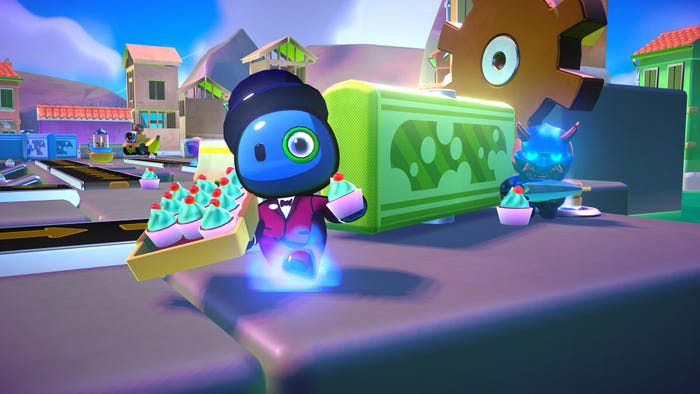A deep and rewarding crafting system is a central feature in an increasing number of hit games. Some of the most well-crafted crafting systems have a lot to teach all developers.

Crafting is big. Like, really big.
It might seem counter-intuitive, but players have made it clear that they find navigating menus and smashing random bits of junk together to make more powerful items to be really satisfying. Poke around on Steam, and you'll see that a stunning number of the chart-toppers of the last couple of years have had some kind of crafting system that goes beyond just defining the central route by which players gain power. An in-depth crafting system can even be one of the major draws in major triple-A games such as The Witcher 3 or Fallout 4.
To that end, we have put together a diverse list of exemplary crafting systems. Each of these games bring something distinctive to the crafting table, and each might inspire and inform crafting systems in your future projects.
Fire Emblem: Path of Radiance/Radiant Dawn: Crafting as character investment


(via Mobygames)
The Gamecube and Wii titles in the Fire Emblem franchise introduced The Forge, a basic crafting feature which reshaped the strategy series’ weapon durability system. Before this point, Fire Emblem games had given most in-game weapons a set level of durability. Weapons and spells could be bought from shops or acquired in battle, but had a fixed lifespan and would need to be shuffled out of your inventory regularly while scaling up the power curve and seeking different effects.
The form of crafting introduced in later installments of the franchise is a simple system where gold is transformed into items, but its presence refocuses how players accustomed to the series’ durability rules can interact with their inventory. In the crafting process, players can adjust weapon stats such as Might, Hit, Crit and Weight. They can change the color of the item, and even give it its own name.
Letting players craft the item of their choice has two effects:
First, it allows them to create special items that can break the established weapon triangle that generally dictates how fights play out. With crafted items, players can expand their heroes' role on the battlefield, giving them more choices on where to place their units and what types of engagements to throw them into. In turn, mission encounters can contain new arrangements of enemies, which in turn can incentivize the crafting of new weapons. An example of this is how Pegasus Riders--characters relying on speedy lances who are vulnerable to axe-using classes--can be upgraded by creating weapons that counter the advantages that axes have over lances.
Second, players effectively have the ability to add weapons to the in-game lore, which is valuable to a series that uses named weapons as a story-driven signifier of power. This adds a touch of personalization that contributes to a net effect both aesthetic and mechanical in nature--the player has another way to become invested in their playable characters. This is a central design pillar of the Fire Emblem series that's also upheld by its permadeath and support systems.
Resident Evil 4, Alone in the Dark, and The Last of Us: Crafting to beat back the darkness

(via Mobygames)
This form of crafting has been around for a long time in survival horror games. Resident Evil 4’s crafting system is the simplest: herbs found around the environment can be consumed immediately to restore a minimum amount of health, or mixed with other herbs to restore extra health or to give the player additional max health. The frequency of its availability, and how the player is able to use it relative to anticipated dangers is very effective at increasing or relieving tension.
The 2008 Alone in the Dark expands this form of crafting to include other items, including flashlights, duct tape, bullets, bottles, and other junk that can be combined to take on enemies who only perish when exposed to fire. Though overly complicated, this awkward system of cobbling together of nuts and bolts in real time does stay true to the notion of urban decay and scavenging that Alone in the Dark roots around in elsewhere.
Ultimately, The Last of Us improves upon this system by scaling down the different types of crafting and giving them clear meanings associated with other items. Bottles and rags clearly translate to molotov cocktails, while blades and explosives clearly translate to a shrapnel-throwing bomb. It ultimately becomes a study of how the distribution of certain resources can impact the emotional tension of different mission encounters.
World of Warcraft: Crafting to define social roles

(via Mobygames)
Crafting in World of Warcraft is a recipe-oriented system distributed across multiple professions. It means that no single character can produce all of the crafted content in the game. In light of this, it’s impossible to talk about crafting without referring to its economic impact.
Professions ranging from skinning to blacksmithing impact the distribution of player gold and player resources throughout the game economy. Isolating some types of crafting to certain professions compels some players to choose those professions, as they are more useful than others in different social and economic contexts. Skinners may make a reliable source of income off of the auction house by selling harvested leather, while enchanters may find themselves holding specific social roles in guilds as those responsible for harvesting loot from slain raid bosses.
But while World of Warcraft’s economies might be an MBA candidate’s dream subject, it also demands the special attention from quest and mission designers seeking to reward players for pursuing crafting over other game systems. This variation of experiences doesn’t just happen in social roles, but also in PvE roles as well, with questlines and encounters only accessible to those devoted to certain paths.
However, quality of execution on crafting has varied over the game's 10-year history. Blacksmithing has traditionally struggled to keep up with dungeon drop tables as a means of producing player weapons/armor, while enchantments and gemcrafted items are considered must-haves for high-end raiding. Yet blacksmiths may still feel rewarded when certain questlines require a prerequisite set of smithing experience in order to proceed, and all professions benefit from specialization quests that send them to unexplored corners of Azeroth. These scenarios shift across World of Warcraft's history depending on expansions, patches, and raid boss requirements and may yield different experiences at different points.
The Witcher: Crafting as aesthetics and ritual

(image via the Witcher Wiki)
The Witcher games are where crafting systems get weird. But in a good way! Good, at least, for helping to define the identity of the Witcher characters, giving them a unique place in the game world and drawing on the unique features in the books that inspired the game.
The Witcher’s crafting deliberately includes a lot of mysteries and restrictions organized by resource-gathering and recipe-based systems, with outputs that have weird and sometimes unpredictable results. The alchemy system in particular is performed by campfires, demanding gathered resources and in-game time spent by the campfire (which, as of the Witcher 3, can affect everything from monster locations to Geralt’s beard). Outputs include potions, oils, and bombs. They can have a wide range of effects, some of which are also influenced by the time of day.
Though the recipe and ingredient distribution deserves study, The Witcher games are notable for using crafting to reinforce the rules that govern its fantasy universe through the fireside rituals and poisonous penalties. Potion crafting in games like Dragon Age Inquisition don’t go to the same lengths to define the central fantasy, acting primarily as a variable on the game’s power curve without reinforcing narrative ideas that lay within the fantasy genre.
Eve Online: Capitalism ho!

(via EveManufacturing)
While World of Warcraft's crafting system could be an MBA candidate’s dream, the game with the greatest socioeconomic system is Eve Online--it even has an economist on staff. Eve Online’s capital ships act as a major driving force for the game's capitalist economy, right down to the manipulation of labor and creation of player social structures in order to create a flow of resources in order to build them.
The crafting of in-game items is so expensive that no single player can hope to acquire all of the necessary ingredients. This cascade of player decisions that effectively organize social power, physical power, and resource power across different geographic sectors of the game.
Eve's crafting system doesn't just define a real-dollar economy. It's a system that incentivizes macro-level social interactions at the end of a long social learning curve. Want to introduce a goal that challenges your players’ sense of justice or economic values? Drop a massively expensive item into your economy, then watch and see how these items are constructed and how they’re used. How players will respond to the presence of such expensive items in your game will depend on how you choose to insert them. If it's a PvP item, collaboration will no doubt intersect with competition as players race to win a global arms race. But in a PvE environment, player guilds may organize along less tiered resource distribution, if the completion of the item leads to the benefit of more as opposed to the disadvantage of less.
Pokemon: Disguise your crafting system

(via Mobygames)
Multiple designers singled this franchise out when quizzed about their favorite crafting systems. And make no mistake, crafting is the central feature of Pokemon.
The game's carefully crafted fiction tries to obscure the fact that the Pokemon themselves are essentially weapons. They may be adorable creatures with distinctive personalities that are skillfully conveyed by a mix of text, sound effects, and animations., but they function just like weapons do in many other crafting systems.
Depending on the game, there are 150-720 of these "objects," which can acquire experience points to level up in the vein of an RPG character. The player can customize which of these objects they have in their 6-slot inventory, as well as what attributes they are given. Players can also replicate many of these adorable Pokemon/weapons by combining pairs of them, or acquiring them through random encounters.
Pokemon's success with several generations of kids shows that your player doesn't necessarily need to know that they're crafting. To truly get a sense of how cleverly the Nintendo's franchise downplays the deep subtleties of its crafting system, look at how clumsily this tends to be handled in most "Pokemon meets X" games on offer in mobile app stores. In most of the knock-offs, you'll find that leveling, combining, and enhancing creature mechanics are often the exact same mechanics used to power up swords, axes, and magic spells in the same game.
Minecraft: The tip of a very large iceberg

(via Mobygames)
Minecraft’s place on this list may seem obvious. With over 20 million downloads on PC alone, it has redefined crafting, and introduced the appeal of it to vast new audience. It has also served as the template for a raft of popular open-world Steam sandbox games, most of which have pillaged Minecraft's unique procedurally generated resource systems and books of crafting recipes acting as central experience curves. Still, many of the original's subtler functions have been cast aside by the imitators despite their importance to the game's success.
First, it's worth examining Minecraft's use of shape-based UI to communicate how players can craft things. Many crafting systems attempt to use aesthetic clues like anvil icons or clanking sound effects to gussy up their drag-and-drop slot interfaces, but Minecraft used a radically simplified aesthetic. Drop iron into the shape of a sword, and you have a sword. Place glass in the middle of wood, and you have a door or a window.
Though it may seem simple on the surface, this design decision highlights the need to rethink the way your player interacts with your crafting system, as there may be a bespoke interface that reinforces your games' strengths and unique personality. This UI choice upholds the core tenet of what Minecraft's crafting systems are all about--seeing something where nothing currently exists, and cobbling together squares to make that something a reality.
For a game so popular with children, this may have been one of the innovations that helped hook in new players. Rethinking your game's UI alone may drastically reshape how you even approach the other lessons studied in the systems mentioned in this piece. Many crafting systems attempt to use aesthetic clues like anvil icons or clanking sound effects to disguise drag-and-drop slot interfaces, but Minecraft used a radically simplified a interface
Second, there's the step that Minecraft originally took in having no in-game crafting recipes that could be checked like a guidebook. It gradually dawned on players that large crafting trees lurk beneath the surface of the game, which wound up encouraging player communication outside of the game to share knowledge through a variety of social interactions (including bragging, mentoring, and large-scale cooperation and collaboration). Though many Minecraft-likes have created large crafting trees with little guidance on how they work, these other games frequently fail to convey the sense of mystery that the original created with these hidden features of their crafting systems. This was in part due to Minecraft's early success as a pre-Alpha release game, so new features were being added and the player base remained manageable to keep some of these mysteries locked away, but it was also because the game relied on its procedurally generated size to be able to physically keep players at a distance from the very materials they might not know they want to stumble on.
With the next generation of consoles, it's worth considering that crafting trees may need to be very deep and very wide to keep players guessing and experimenting with the in-game resources--maybe even as deep and wide as the systems required to actually craft and forge objects in real life.
Not just a power curve
In examining these systems, it's important to note that crafting is not just a power curve--it's a design pillar whose central verb (creating) drastically alters how your player might approach the other pillars your game presents. That means that it has great potential to boost or undermine a player's interest in those other design pillars. How can crafting get your player more invested in the characters that are holding the crafted items in their inventory? How can it help them to define a sense of individuality in a crowded online space? How can it help them cobble together a solution to a terrifying challenge? These are just some of the questions you can start to ask as you begin to look at crafting not just as a supplementary system, but as a central reason that someone should pick up your game.
[Special thanks to Liz England, Lauren Carrecia, Rob Manuel, Carly Smith, Patrick Lindsey, and Javy Gwaltney for their input on this article.]
About the Author(s)
You May Also Like








